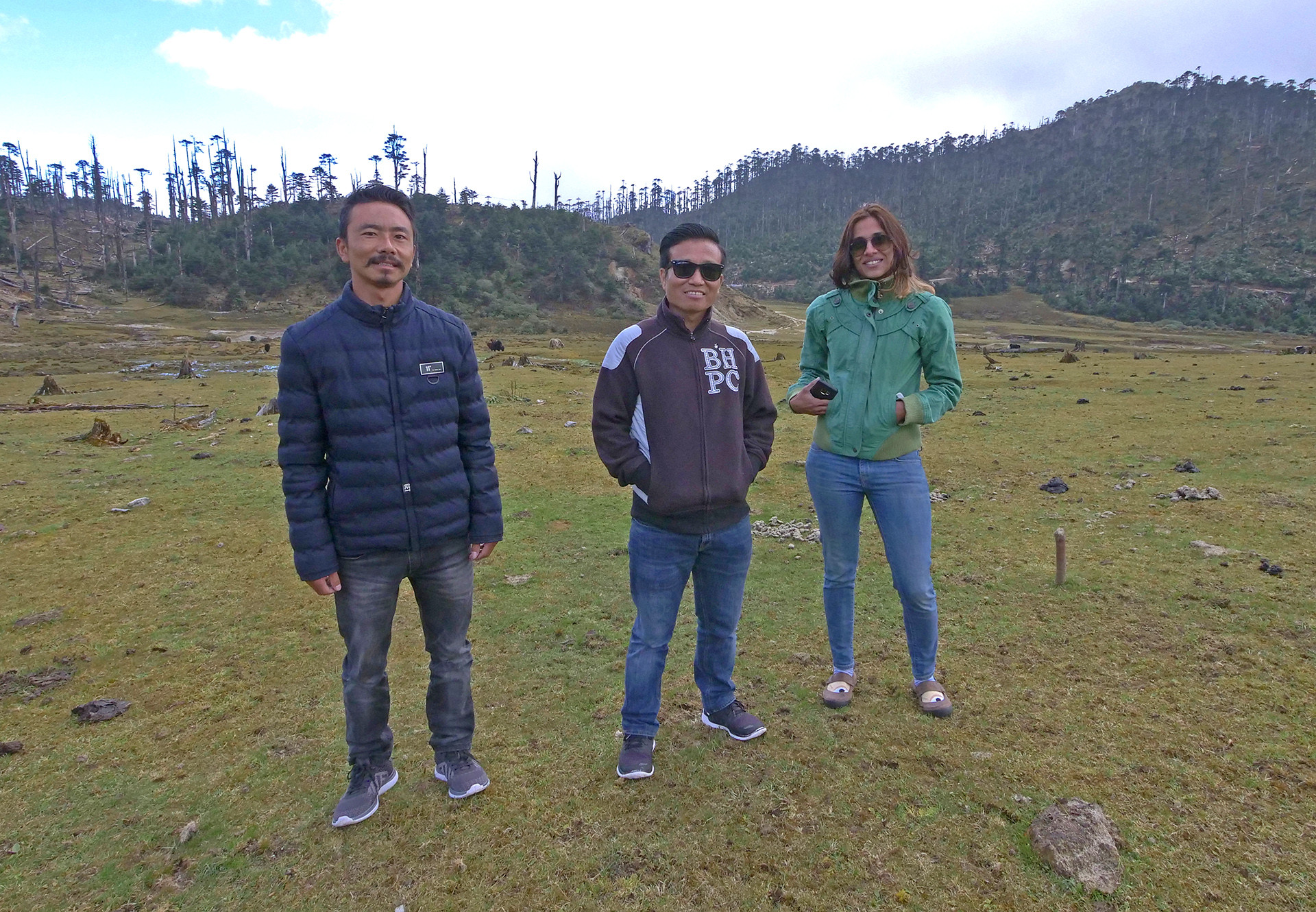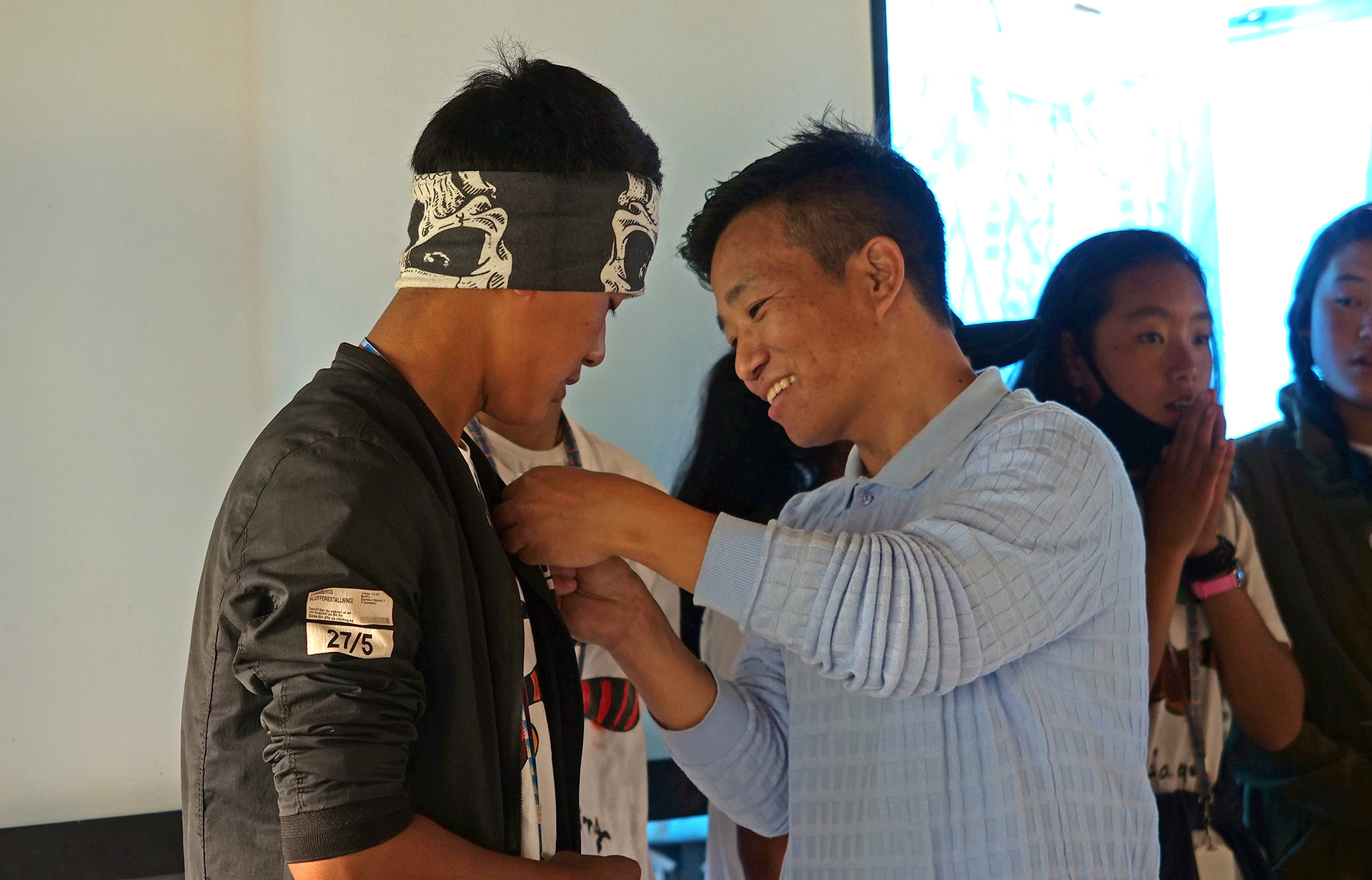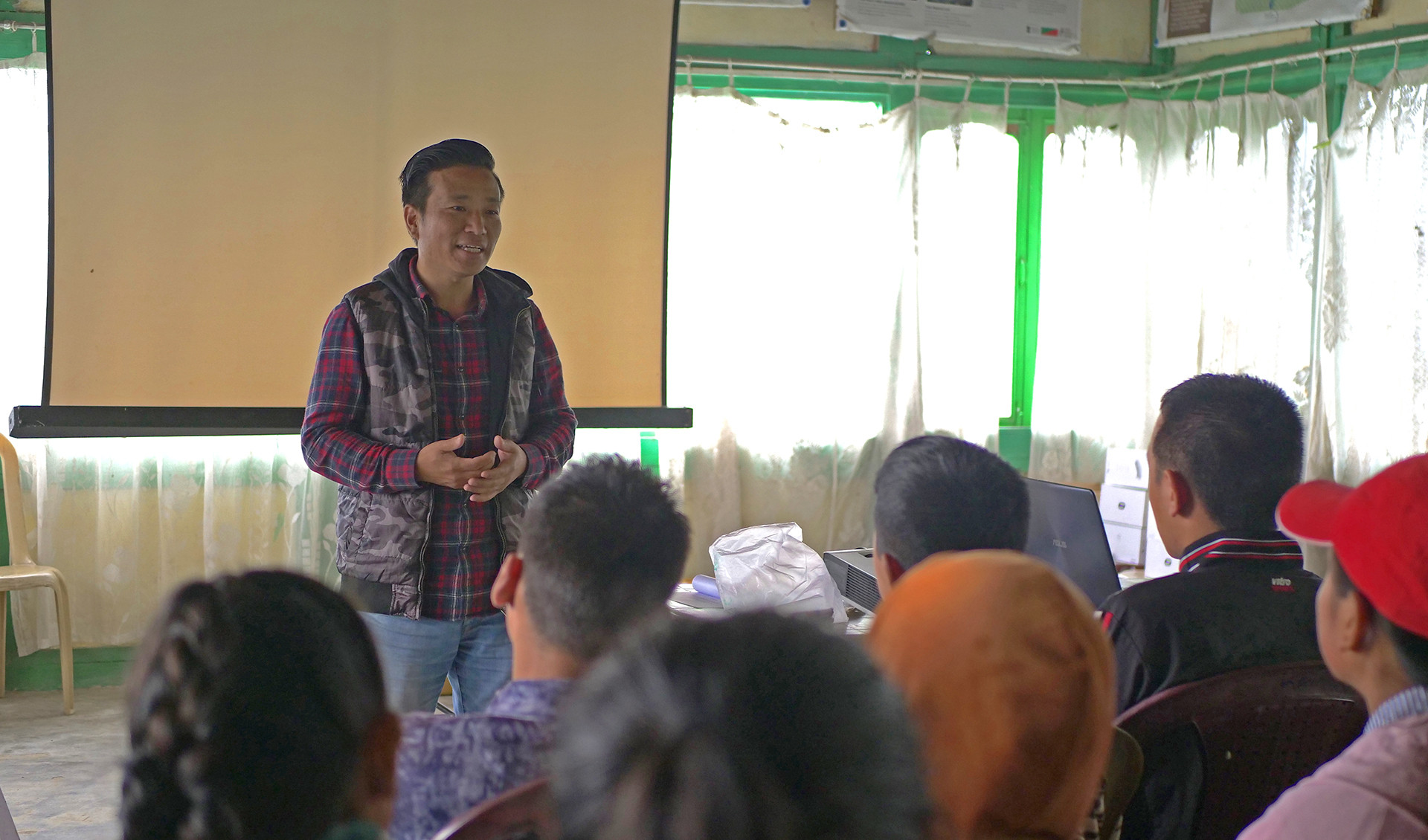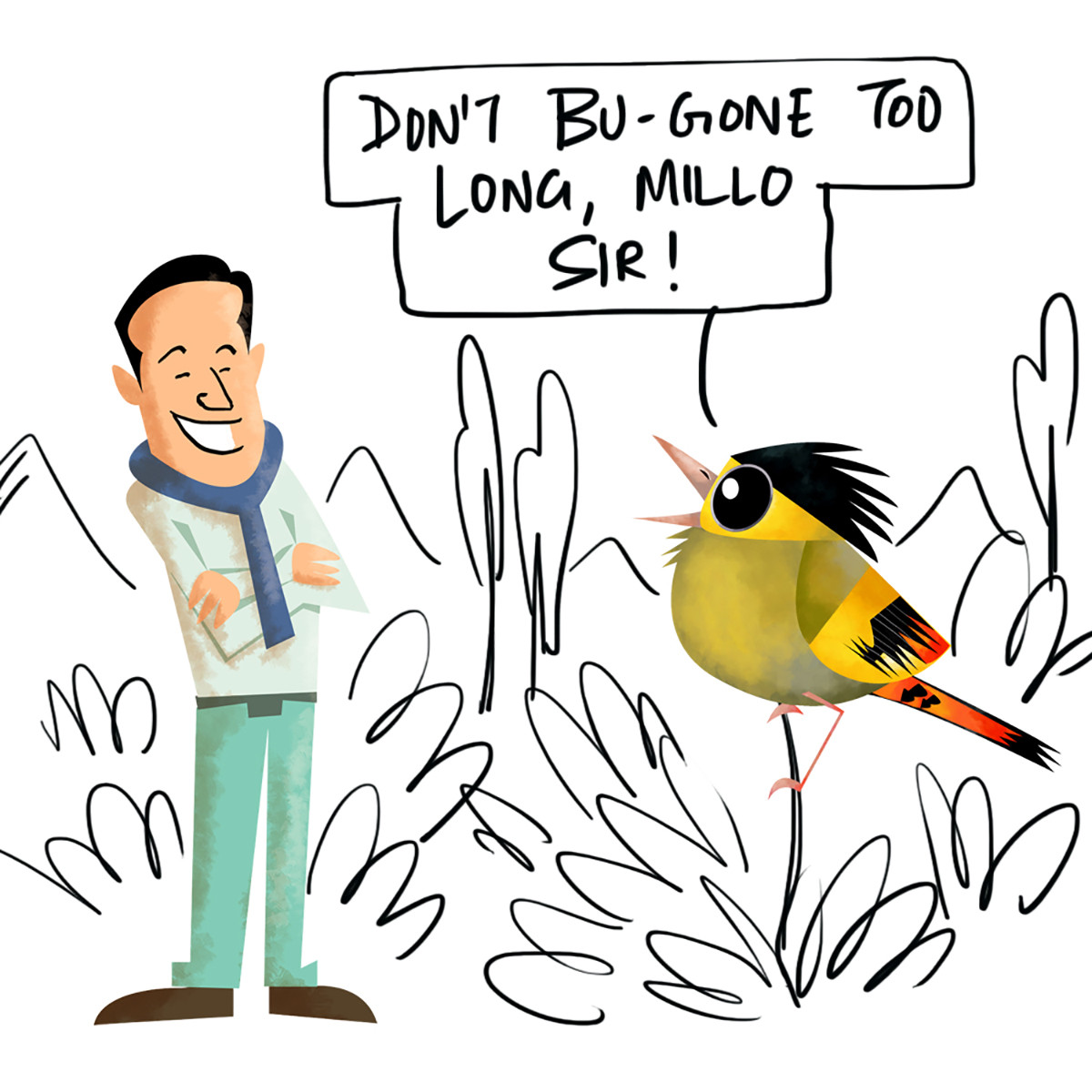A few years ago, at the annual wildlife week camp held around Shergaon Forest Division, we were teaching children about camera traps. During the demonstration, we started to discuss some of the mammal species that we could expect to capture on camera. And soon a Barking Deer story emerged from one of the kids. He told us how a Barking Deer drowned in the Tenga river despite the forest department’s best efforts to rescue it. Any other time, the fresh carcass of a deer would be a windfall, but the DFO present, gave the order to cremate the animal. The kid continued: “Sabke saamne jalaaya pura meat ko, khatra toh hai!” (He set the meat on fire in front of everyone, what a deadly guy!).
The khatra DFO is Millo Tasser aka DFO Saab aka Tasser Sir, as he is known in these parts. Tasser Sir is the engine of our large and often unwieldy team. If you are familiar with Arunachal Hindi – he is the person who makes hoga (to do) possible. He is the driving force behind a slew of initiatives that has made the Shergaon Forest Division an exemplar in conservation – from awareness and outreach programs to solid, mud-on-the-boots forest patrolling. With him, we have dreamt up the unlikeliest of schemes, and got them done – he has given our whole team a feeling of sakega (can do).
The annual wildlife week camp is a shining example, where a motley crew of sakegas – artists, botanists, camp staff, cooks, film-makers, musicians, wildlife biologists – volunteer to converge for a week at the Nature Interpretation Centre just outside Eaglenest Wildlife Sanctuary. (The centre itself was created by a team put together by Tasser Sir, who wanted perfection to the point where we would preemptively say that work at the interpretation centre was over when we sensed he wanted to redo or add something.) 70 students and 20 teachers from 12 schools in the area spend a week in the wilderness, watching wildlife, learning about the stunning biodiversity of the region, and creating nature-inspired art. To keep an event like this running for years, with both the sakegas and students teary-eyed at the parting, and knowing full well that they will come back the next year, is a testament to the team. Some of our kids have published scientific papers in journals, others have promised that they will never use their airguns and catapults. One has come back as a bird-watching expert (teaching us and the newer batches of kids), and some have volunteered with us for fieldwork in Eaglenest.
Working together with Tasser Sir, it is often easy for all of us to get our minds churning with excitement and with the many many things we worked on together, sometimes all it took to get things going was an affirmation of one of us saying “I’m serious”. It was at a wedding when we watched a local band from Rupa that the ‘Forest Song’ was born. It became an intensive collaborative effort between The Bottle Rockets and traditional musicians from the Bugun and Shertukpen community. The song integrates a folk melody called Nangey Yoo from Shergaon village with modern instruments and recording techniques and counts among its musicians 75 vocalists singing in five different languages, from 12-year-old fresh-faced students to a 95-year-old great grandmother. Jimbu Marphew, a Bugun musician, penned the lyrics in the Bugun language, celebrating the Bugun Liocichla – a newly discovered bird species named after his community. The forest song became one of the most widely shared cultural memorabilia we could have hoped to leave behind for forests and conservation in the area.
DFO Saab’s attention and acceptance of the power of arts in spreading awareness about wildlife and conservation is complemented by his unflinching commitment towards rigorous wildlife protection. Working with the Bugun community of Singchung and with researchers and filmmakers from the area, Tasser Sir has been instrumental in the setting up and running of the multi-award-winning Singchung Bugun Village Community Reserve (SBVCR). The team strives to protect the Bugun Liocichla and a host of endangered flora and fauna that buffers Eaglenest Wildlife Sanctuary from additional pressures. Today, these 17 sq.km. of irreplaceable Bugun community forests are patrolled by a team of ten trained professional Bugun youth. The ten reserve staff count among them a filmmaker, trained snake-handler and expert adventure-tourism guides. It is the tenacity and attention to detail that Tasser Sir possesses in droves that has made this possible, and he shares a deep bond with each of the SBVCR staff. He is very much a part of their lives, making special arrangements for naming ceremonies, festivals and the like, and going that extra mile to even file their tax returns himself.
His deep connection with the people of the division is clear to see from his numerous acts of kindness. On 18th October 2019, when Eaglenest Wildlife Sanctuary turned 30 years old, a multi-layered cake was driven 150 kilometres in the company of a special minder who ensured that it reached the destination intact. Shergaon golden apples and locally grown kiwis were distributed to the team along with the cake as they celebrated their home’s 30th anniversary.
One of Tasser Sir’s 'arch-nemeses' was Nima, the indefatigable manager of the bird tourism project in SBVCR and the backbone of what has now become the Bugun Eco-tourism Centre (another initiative dreamt up and completed by Tasser Sir and team). Nima is the go-to-man in Eaglenest/SBVCR, and there is hardly a logistical problem that he cannot solve. It all began with a temperamental phone. This antique instrument was the means by which Nima kept in touch with the world – all the world, except Tasser Sir. Mysteriously, Nima could hear his phone ring whenever someone called him, but not when Tasser Sir did. The suspicion was that Nima was deliberately avoiding the DFO out of fear of being put to work. Soon we were conducting scientific experiments, and we proved that Nima’s phone was, in fact, being hyper-selective. Today Nima has a new phone, courtesy Tasser Sir, a win-win for both, and it was well before the gift of the phone that Nima referred to Tasser Sir as ‘mera parivar jaise’ (like a family member).
Today, as he leaves Shergaon Forest Division for other pastures, there is not one person who is not sad to see him go. There have been public appeals and pressure, sometimes teary-eyed, to keep him in Shergaon for a little more time. It is difficult to put into words, a goodbye, to someone whose head is as cool as their heart is warm. Our consolation, we realise, like the children of Eaglenest, we have much to remember about this khatra DFO, who is one of the finest officers we have had the fortune of working with and one of the finest human beings we have known.





